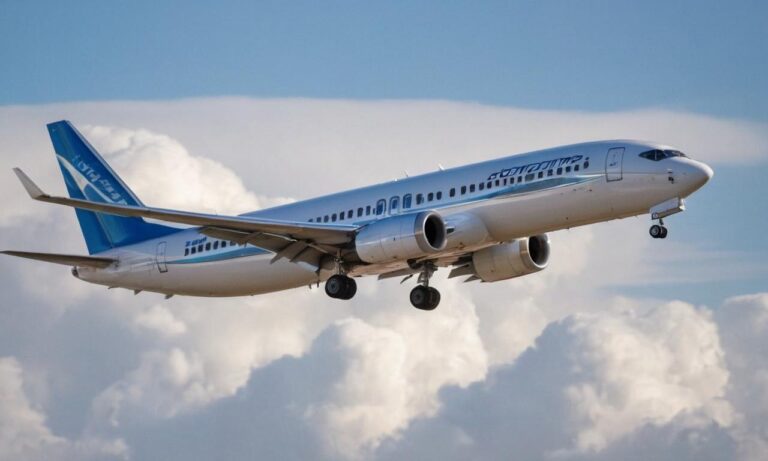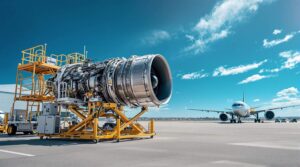Curiosity about the speed of Boeing 737 aircraft is a common inquiry among aviation enthusiasts and travelers alike. The Boeing 737, a widely used narrow-body airliner, has been a stalwart in the aviation industry for decades. Let’s delve into the intricacies of its speed and performance.
The Basics of Boeing 737 Speed
The cruising speed of a Boeing 737 generally depends on the specific model. However, as a rule of thumb, these aircraft are known for their cruising speeds ranging from approximately 485 to 560 knots (557 to 644 miles per hour). This speed range allows for efficient and timely travel, making the Boeing 737 a preferred choice for short to medium-haul flights.
Factors Affecting Speed
Several factors influence the speed of a Boeing 737 during different phases of flight. One crucial factor is altitude. As the aircraft ascends to cruising altitude, it typically achieves its optimal cruising speed. Additionally, weather conditions, such as headwinds or tailwinds, can impact the groundspeed and, consequently, the overall travel time.
Evolution of Boeing 737 Models
Over the years, Boeing has introduced various models of the 737, each with improvements in performance and efficiency. From the classic 737-100 to the modern 737 MAX series, advancements in technology have contributed to enhanced speed, fuel efficiency, and overall flight capabilities.
Efficiency and Environmental Considerations
Boeing has continuously focused on making its aircraft more fuel-efficient and environmentally friendly. Newer models, like the 737 MAX, incorporate advanced technologies to optimize fuel consumption while maintaining competitive cruising speeds. This commitment aligns with the aviation industry’s ongoing efforts to reduce its environmental impact.
Significance in Commercial Aviation
The Boeing 737’s speed, coupled with its reliability and versatility, has made it a staple in commercial aviation. Airlines around the world trust the 737 for its ability to efficiently transport passengers to their destinations. The balance between speed and fuel efficiency has contributed to the enduring popularity of this aircraft.
In Conclusion
The speed of Boeing 737 aircraft varies across models but generally falls within the range of 485 to 560 knots during cruising. Factors such as altitude, weather conditions, and technological advancements play crucial roles in determining the aircraft’s overall performance. As a symbol of reliability and efficiency in commercial aviation, the Boeing 737 continues to soar through the skies, connecting people and places.
Frequently Asked Questions
Aviation enthusiasts often have questions about the Boeing 737 and its speed. Here are some frequently asked questions to provide more insights:
-
What is the takeoff speed of a Boeing 737?
The takeoff speed of a Boeing 737 varies, but it typically falls within the range of 130 to 155 knots, depending on the specific model and payload.
-
How does the Boeing 737 handle turbulence?
The Boeing 737 is designed to handle turbulence efficiently. Its aerodynamic features and advanced avionics systems contribute to a smooth and stable flight experience, even in turbulent conditions.
-
What role does the winglet play in enhancing the aircraft’s performance?
Winglets, found on newer Boeing 737 models, help improve fuel efficiency by reducing drag. They contribute to enhanced overall performance and play a significant role in the aircraft’s efficiency.
Technological Advancements and Speed
Advancements in aviation technology have played a pivotal role in shaping the speed capabilities of Boeing 737 aircraft. The integration of state-of-the-art avionics, more efficient engines, and aerodynamic enhancements has contributed to the continuous evolution of the 737’s performance.
| Technology | Impact on Speed |
|---|---|
| Advanced Avionics | Improved navigation and control systems enhance the overall efficiency, allowing for better speed management during different flight phases. |
| Next-Generation Engines | More powerful and fuel-efficient engines contribute to higher cruising speeds, making the Boeing 737 a faster and more economical choice for airlines. |
| Aerodynamic Enhancements | Innovations such as winglets and improved airfoil designs minimize drag, optimizing the aircraft’s speed and fuel efficiency. |
Global Impact and Market Trends
The Boeing 737’s speed and efficiency have not only shaped the aviation industry but also influenced market trends and global connectivity. Let’s explore some key points regarding the global impact of the Boeing 737:
-
Market Dominance
The Boeing 737 has maintained a significant market share, dominating the narrow-body aircraft segment. Its reputation for speed and reliability has contributed to its sustained success.
-
Global Connectivity
By offering efficient short to medium-haul transportation, the Boeing 737 has played a vital role in connecting diverse regions worldwide, fostering economic and cultural exchange.
-
Future Trends
With ongoing advancements in aviation technology, the future of the Boeing 737 may involve further speed improvements, increased fuel efficiency, and a continued focus on reducing environmental impact.






